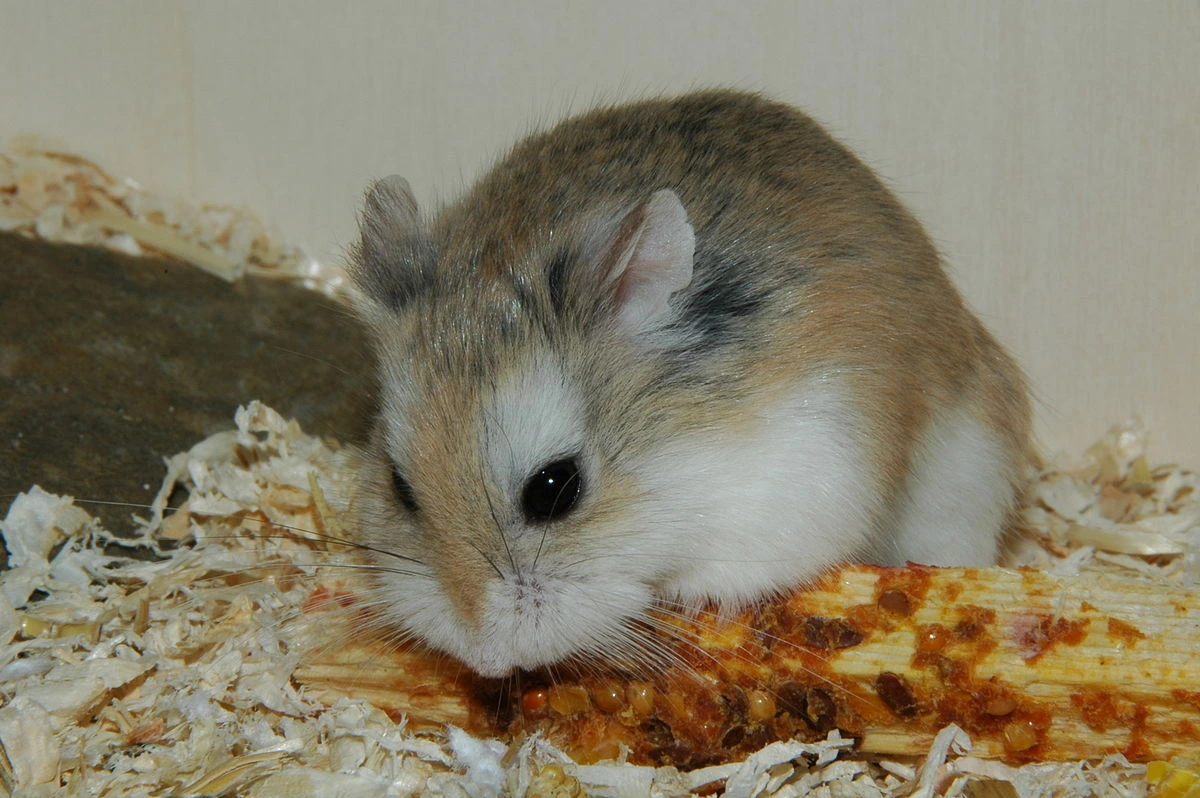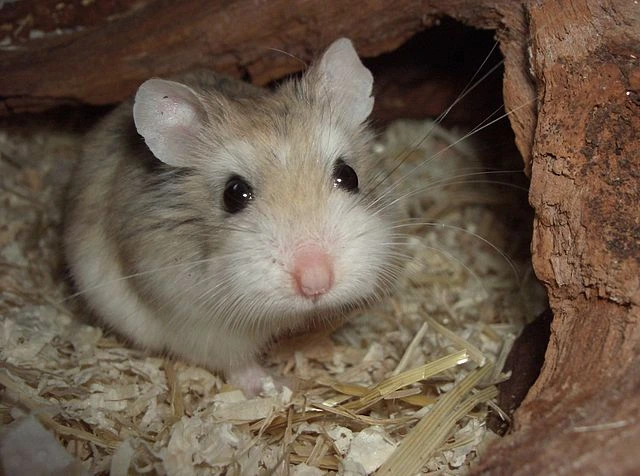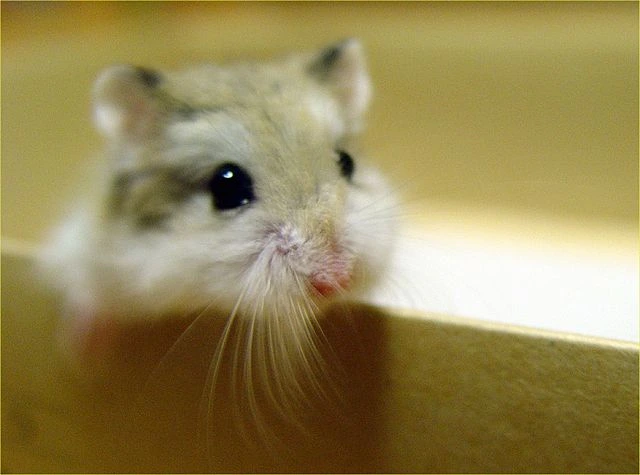Introduction
Today, we’re talking about the tiniest and speediest of all hamster species – the Roborovski Hamster. These petite and oh-so-adorable little guys are perfect for those looking for a low-maintenance pet with a big personality.
Appearance and Characteristics
Roborovski Hamsters, or “Robos” as they’re affectionately called, are the smallest of all hamster species, measuring a mere 2 inches in length. Their sandy brown fur and white bellies make them look like tiny, cuddly desert creatures. Plus, their dark, round eyes and whiskered faces are simply too cute for words!
Life Expectancy and Health
These little dynamos have a life expectancy of 3 to 3.5 years, which is relatively long compared to other hamster species. They’re generally healthy, but you also have to provide them with proper care, including a balanced diet and clean living environment.
Housing and Environment
When it comes to housing your Robo, bigger is always better! These guys need plenty of space to explore and exercise. Opt for a large, well-ventilated enclosure with a solid floor and no wire bars to prevent injury. Fill their home with soft, unscented bedding, and create hiding spots using cardboard tubes or small wooden houses.

Diet and Nutrition
Robos are natural seed-lovers, but they also need a balanced diet to stay healthy. Feed them a high-quality, commercial hamster mix that includes seeds, grains, and protein-rich pellets. Here’s a breakdown of what they can, and cannot eat:
What They Can Eat
- Commercial Hamster Mix: A high-quality commercial hamster mix containing seeds, grains, and protein-rich pellets should be the staple of your Robo’s diet.
- Fresh Fruits and Vegetables: Offer small amounts of fresh fruits and veggies like apples, carrots, and celery. Dark, leafy greens such as kale, spinach, and collard greens are also great options.
- Lean Meat and Cooked Chicken: Robos can have small portions of lean meat or cooked chicken.
- Insects and Invertebrates: In the wild, Roborovski Hamsters eat insects and invertebrates like spiders, mealworms, moths, and crickets. You can offer these as occasional treats.
What Roborovski Hamsters Cannot Eat
Under no circumstances should you feed your Roborovski Hamster the following:
- Citrus Fruits: Avoid feeding your Robo citrus fruits, as they are acidic and can cause digestive issues.
- Onions and Garlic: These pungent vegetables can be toxic to hamsters.
- Chocolate and Sweets: Sugary treats can lead to obesity and dental problems in hamsters.
- Almonds: Almonds contain cyanide, which can be harmful to your Robo.
Remember to always introduce new foods gradually and monitor your hamster’s reaction. If you notice any adverse effects, discontinue feeding them that particular food item. Also consult with a veterinarian if you have concerns about your Roborovski diet.
Exercise

Roborovski Hamsters are like furry little athletes, always on the move! Provide an appropriately-sized exercise wheel (solid or mesh, not wire) for them to run to their heart’s content. Also, consider adding climbing toys, tunnels, and puzzle feeders to keep their curious minds engaged and satisfied.
Here’s a list of toys that are perfect for them:
- Tunnels and Tubes: Robos love to explore and hide in tunnels and tubes. You can use cardboard tubes from paper towel rolls or purchase plastic or wooden tunnels designed specifically for hamsters.
- Climbing Toys: Roborovski Hamsters enjoy climbing, so adding ladders, wooden branches, or other climbing structures to their enclosure can provide hours of entertainment.
- Puzzle Feeders: Encourage your Robo’s natural foraging instincts by using puzzle feeders or hiding small treats around their cage or play area. This provides both mental stimulation and physical activity.
- Chew Toys: Hamsters’ teeth grow continuously, so providing chew toys made from untreated wood, pumice stone, or mineral chews can help keep their teeth healthy and trimmed.
- Hamster Balls: A hamster ball allows your Robo to safely explore outside its cage while getting some much-needed exercise. Always supervise your hamster while using a hamster ball and limit their time inside to prevent exhaustion.
- Digging Box: Roborovski Hamsters love to dig and burrow. Create a digging box using a plastic container filled with hamster-safe bedding or sand, and watch your Robo happily burrow away.
- Homemade Toys: Get creative and make some DIY toys for your Robo using household items like paper bags, cardboard boxes, or toilet paper rolls. Just ensure there are no harmful chemicals or sharp edges.
By providing your Roborovski Hamster with a variety of toys and enrichment activities, you’ll keep them entertained, healthy, and happy.
Social Life and Bonding
Robos are social butterflies, often coexisting peacefully with their siblings or same-sex pairs. However, you should still always monitor their interactions and separate them if aggression occurs. As for bonding with you, their human, be patient! Robos are skittish by nature, so it’ll take time and gentle handling to build trust.
Common Health Issues
While Roborovski Hamsters are generally healthy, they can be prone to respiratory infections, dental issues, and skin problems. Keep an eye out for any signs of illness and consult a veterinarian if you have concerns. Remember, prevention is always better than cure.

Breeding and Baby Roborovski Hamsters
Breeding Robos can be a rewarding experience, but it’s not for the faint of heart! Be prepared for the responsibility of caring for multiple hamsters, as well as finding loving homes for the babies.
Maturity and Breeding Age
Roborovski Hamsters reach sexual maturity at around 4 to 5 weeks of age. However, we recommend waiting until they are at least 3 to 4 months old before attempting to breed them, as this allows them enough time to fully mature and develop.
Pairing and Mating
Robos are social creatures and often coexist peacefully others When introducing a male and female for breeding, watch their interactions closely. They may fight initially, but eventually, they should establish a bond and mate. Mating typically occurs at night, and the female will display a “lordosis” posture, where she arches her back and raises her tail, signaling her receptiveness to the male.
Gestation and Litter Size
The gestation period for Roborovski Hamsters is around 22 to 30 days. Once the female gives birth, she can have a litter size ranging from 3 to 9 pups.
Caring for the Mother and Pups
After giving birth, the mother Robo will be protective of her pups and may become aggressive if disturbed. Give her space and minimize handling during this time. The pups are born hairless, blind, and deaf, but they develop rapidly. By 10 to 14 days, they’ll have developed some fur and opened their eyes.
At around 3 weeks of age, the pups will begin to eat solid food and explore their surroundings..By 4 weeks, the pups should be weaned and can be separated by sex to prevent unintentional breeding.
Responsible Breeding
Breeding Roborovski Hamsters should only be undertaken with a commitment to the health and well-being of the animals involved. It’s important to have a clear understanding of their reproductive behavior, as well as the resources and time required to care for multiple hamsters.
Tips for First-Time Roborovski Hamster Owners
If you’re new to the world of Robos, welcome aboard! Here are a few quick tips to help you on your journey:
- Be patient during the bonding process
- Maintain a clean and spacious living environment
- Offer a balanced diet and fresh water daily
- Monitor your hamster’s health and behavior closely
- Enjoy the delightful presence of your tiny, energetic companion
Conclusion
There you have it! Our simple, but effective briefing welcoming you to the wonderful world of Roborovski Hamsters. These tiny, furry speedsters make wonderful pets for those willing to invest time, patience, and love into their care. So, go ahead and welcome a Robo into your life – you won’t regret it!
